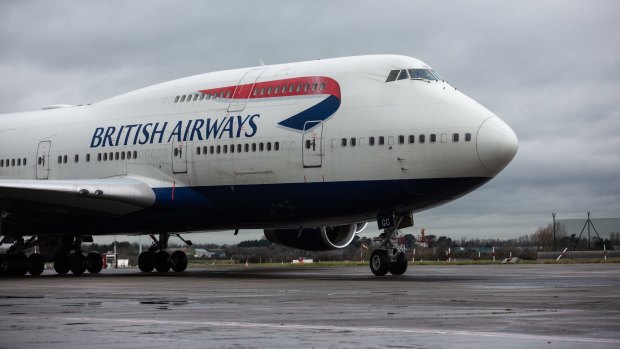This was published 3 years ago
Coronavirus and planes: Why airlines must retire their 747 jumbos
News that British Airways is retiring all its 747s with immediate effect might be sad for aircraft fans and sentimental passengers, but it's certainly no surprise. The famed jumbo jet has been flying off into the sunset for years now; coronavirus has simply sped up the journey.
Passengers might prefer the extra space afforded by Boeing's "queen of the skies" but, as always, economics trump their tastes.
The reason for BA's decision is that giant, four-engine aircraft like the 747 are too expensive to operate.

British Airways Boeing 747 at Dublin Airport.Credit: Nick Morrish/British Airways
Many other airlines have made the same choice. First of all, there is maintenance. Keeping four engines running to the required standards is more expensive than modern twin-jets.
This is compounded by the fact that many 747s have older engines which require more work than newer versions. Then there is the cost of fuel, which represents about 50 per cent of the expense in running a long-haul airline.
Two engines are more fuel-efficient than four, especially when they are modern gas turbines which merely sip kerosene when compared to gas-guzzling older models.
Aerospace safety regulation has also driven change. As engines became more reliable, authorities decided aircraft with just two engines were safe to fly long and remote routes. The logic behind "extended range twin operations" - or ETOPs - was that the chances of double engine failure was so unlikely the risk was acceptable, and the safety factor of having four engines was no longer essential. Finally, there are worries about getting bums on seats. These aircraft are routinely equipped to carry more than 450 passengers. Economies of scale do work in the airline business but they can be hard to achieve. If carriers fill a jumbo then they easily make money. But when they can't, that's a problem.
With a 747-400 - the model British Airways uses - having a per hour running cost of about $38,612, the hit from flying aircraft which aren't packed out with passengers quickly mounts up. In the Covid-19 world where demand for air travel has collapsed, it doesn't make sense to keep huge aircraft when you have little hope of filling them. One other reason for the demise of the jumbo is how we fly.
Passengers don't like the "hub and spoke" model where big aircraft transport large numbers of people on long flights between major airports, before they change to smaller airliners for shorter journeys to arrive at their final destinations.
No one wants to spend more time in the air than they have to, with the associated hassle of transiting through extra airports. It's no wonder the "point to point" model won, with smaller airliners taking people on long direct journeys. A few weeks ago, Boeing hinted it would stop building the 747 in a year or so, saying it was "continuing to evaluate" its viability.
This is seen as a sign that when the current orders - which are for freighter models - are completed, the production line will shut. British Airways' decision is just another step as the queen of the skies loses her crown to smaller, more efficient aircraft.
The Telegraph, London
See also: Veteran pilot says goodbye to 'Queen of the Skies'
Sign up for the Traveller newsletter
The latest travel news, tips and inspiration delivered to your inbox. Sign up now.